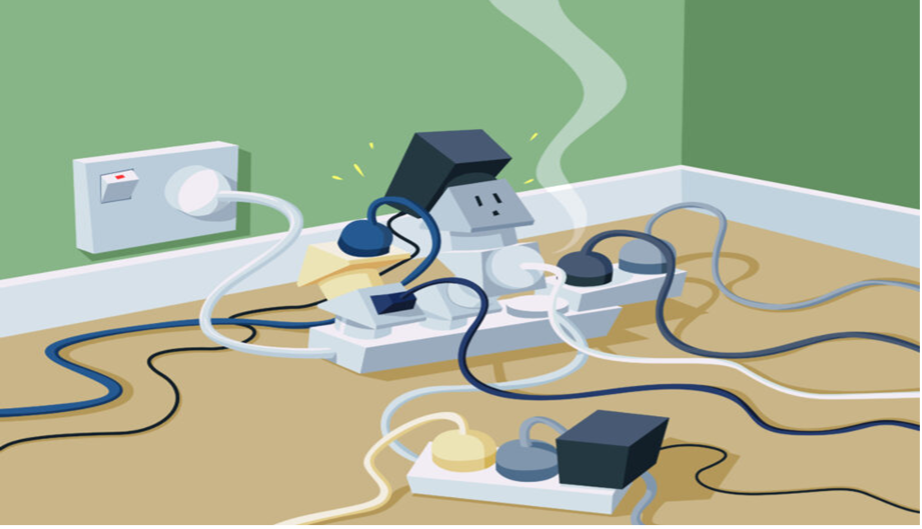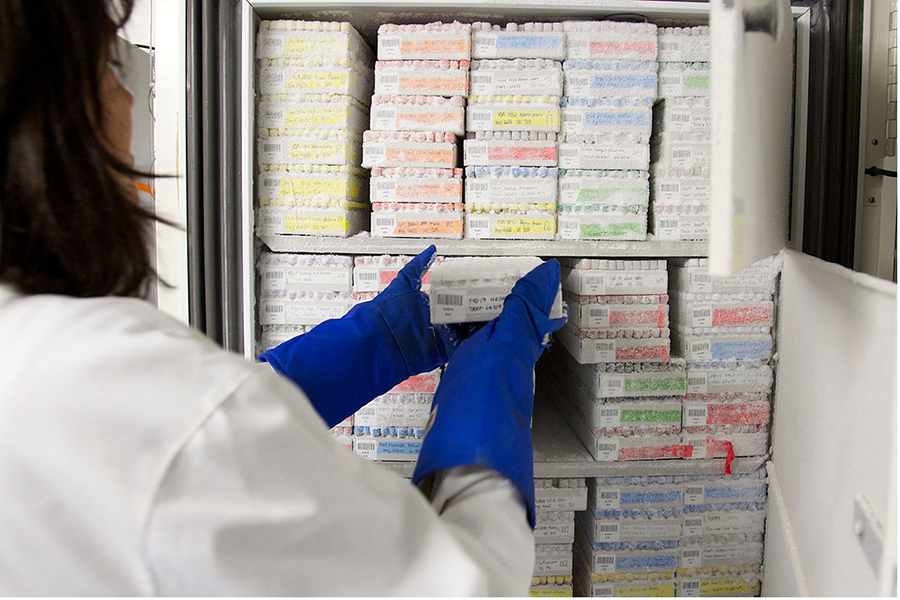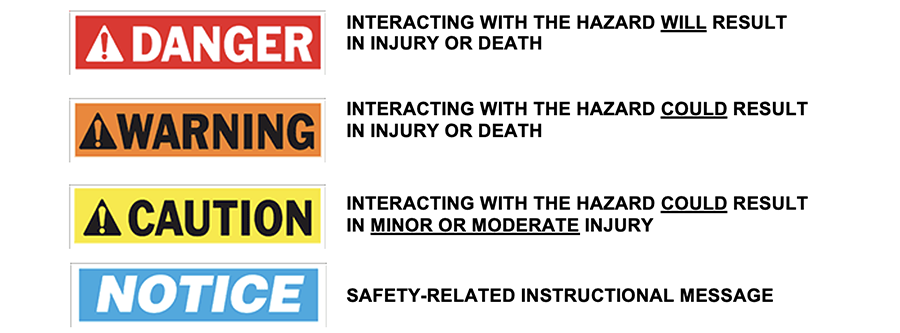Environmental Health & Safety from the Director's Desk
|
|
|
|
Greetings and welcome back to a new school year. As everyone becomes accustomed to their new routines for the fall semester, I would like to continue to share updates from the world of Environmental Health and Safety (EHS).
In this edition of the newsletter, you will find helpful information on identifying electrical hazards, an introduction to the sections of safety data sheet (SDS), a quick guide on safety signage, and a brief update from our new Hazmat Manager.
In addition, I would like to draw special attention to our Biosafety section this quarter. Read on to learn about National Biosafety & Biosecurity Month taking place during October. The University is recognizing this month with new events that will include prizes!
As always, we hope you find the information in this newsletter informative and useful, and we look forward to continuing to assist you in a safe and productive manner. It continues to be the mission of EHS to ensure that everyone returns home each day as safe and healthy as they arrived at work or school. A special note to please keep in mind that this is a community environment that is supported by each and every one of us, and that our community includes all living things on our campuses—including plants, wildlife, and humans. Please be kind to our campus environment and best of luck this semester!
Warm regards,
Jennifer Laine, DrPH
Executive Director, EHS
|
|
|

|
|
Electricity is a significant part of our daily lives, from the moment we wake-up to the moment we go to sleep—and we usually forget how powerful and dangerous electricity can be.
Do not assume that all equipment and cords remain unchanged at work. To help prevent electrical hazards, review a few common hazards that you should be aware of and take the necessary precautions to prevent adverse events:
Faulty or Damaged Wiring in Electrical Cords
Check electrical equipment regularly for wear and tear. Equipment with damaged cords or plugs must be removed from service and reported for repairs or replacement. Electrical cords must not: be affixed to structures; extend through walls, ceilings, floors, or under doors or floor coverings; or be subject to environmental or physical damage.
Overloading Circuits
If too many devices are plugged into a circuit, the current will heat the wires, elevating the temperature, and may lead to a fire. Also, damaged or melted insulation can expose wires and allow arcing to occur, which can also lead to a fire.
Use of Extension Cords
Extension cords over time tend to develop cracks that can lead to electrical shocks or sparking. Using electrical tape to cover these cracks is not the solution. When there is visible damage, the cord should be replaced.
Note that extension cords should never be a substitute for permanent wiring. The best solution would be to place your electrical devices within reach of the electrical outlets.
If you do have to use an extension cord, it is allowed for a period not to exceed 90 days. Plug cords directly into electrical outlets—no daisy chaining! One cord should serve only one portable appliance. The ampacity of the extension cords must not be less than the rated capacity of the portable appliance supplied by the cords, and must be maintained in good condition without splices, deterioration, or damage.
Water Spills on Electrical Equipment
No electrical equipment shall be operated or switched on if it has been in contact with water. Water increases the risk of electrocution, especially if the equipment’s insulation is damaged. Switch off the main power connection, unplug the wet or damp equipment and dry them out completely. Contact our Facilities Work Control to have one of our electricians check the equipment to confirm that it is safe to use.
Loose Fitting Plugs
Plugs for all electrical equipment should fit securely in their sockets. Loose fitting plugs can cause the equipment to overheat and catch fire. Regular physical checks to ensure that the plugs have not loosened is highly recommended.
It is important for all personnel to understand their electrical needs and not overload the electrical systems in their building. Contact Facilities Work Control for an assessment or modification to your department’s electrical needs or requirements.
|
|
|
|
Our Hazardous Waste team set a record volume of waste managed this quarter assisting the UM community with numerous lab cleanouts. We would like to encourage our community to frequently review their chemical inventories for chemicals that are expired, damaged, or otherwise no longer needed, and request for disposal by our team.
Visit the Environmental Protection and Hazardous Materials webpage for information. The Chemical Waste Disposal Form (Excel sheet) is located on this page, including instructions on how to fill out and submit the form.
If you have any questions regarding wastes that you would like to have addressed, please email Brian Cumbie.
|
|
|
October is National Biosafety & Security Month
Every year the American Biological Safety Association (ABSA) presents October as Biosafety and Biosecurity Month. For labs, the month is traditionally recognized as a period where we focus on and reinforce our attention to biosafety standards. As we have done the previous three years, EHS Biosafety will be recognizing the month of October with outreach events to help promote good biosafety.
Prizes & Free Food!
Every Friday in the month of October, we will be hosting an event to promote lab safety culture.
On October 6, we will be kicking off the month with a webinar to cover our efforts for Biosafety Month this year and announce the winners of the Lab of the Year awards. This will involve prizes!
Fridays throughout October will feature in-person informative safety session from some of the most commonly employed lab vendors at UM—plus, these sessions will include free food!
Final locations and times will be announced for the in-person events soon. Attend our webinar on October 6 to ensure you don't miss the announcements. Check out the Biosafety webpage for more details on how you can participate.
Why a whole month dedicated to Biosafety?
In the summer of 2014, federal scientists on the National Institutes of Health (NIH) Bethesda, Maryland campus were cleaning out cold storage facilities to dispose of samples they did not need anymore. What they found that day came as a complete surprise and in part contributed to the decision to start the aforementioned Biosafety Month. They found six vials of variola virus, otherwise known as smallpox, which exists today at only two places in the world, the CDC and the Russian CDC counterpart. The vials were discovered in a box with ten other vials that were not clearly labeled.
Checking Bio Inventories & Clearing Out Unneeded Samples
We're encouraging all labs to adopt the practice of cleaning out old freezers to dispose of inventory that's no longer in use by the lab. While we don't anticipate finding vials positive for smallpox, the practice can help shed light on samples that have long gone overlooked by the lab and could be taking space for more pertinent research. For labs that have never taken the time to review their cold storage contents, we ask that you devote time to this task sooner rather than later. Items that are not clearly labeled and their identities in question should always be discarded through the proper disposal streams. As always, if you have questions about disposal or need assistance, please reach out to EHS.
|
|
|

|
Back to Basics: ANSI Z535 Safety Signage Standards
From office buildings to construction sites, safety signs are all around to protect employees and promote a safe and secure work environment. They are instantly recognizable in communicating potential hazards and can greatly reduce accidents, injuries and even death. They also serve to provide every day general information, education and direction to employees and visitors.
According to the American National Standards Institute (ANSI), Z535 Safety Signage Standards—the nationally recognized system for hazard recognition and safety signage—includes four color codes to communicate the level of danger presented:
- Red – for use with danger signs
- Orange – for use with warning signs
- Yellow – for use with caution signs
- Blue – for use with notice signs
|
|
|

|
|
The colors, words, and symbols are chosen and reinforced regularly to help the public identify with these safety signs and acknowledge potential hazards. This consistency aids us in associating with safety messages, even from a distance.
The importance of safety signage in the workplace cannot be overstated—it reduces the risk of workplace injuries and accidents as employees are more alert to workplace hazards when safety signs are present.
So, let's pay attention to the safety signs. The messages say what they mean... and mean what they say!
|
|
|
|
Safety Data Sheets
A safety data sheets (SDS), formerly known as a material safety data sheet, is an important document that describes the chemicals you are using at work and school, with helpful information to formulate safe practices and procedures during use. A current SDS can help you understand how to properly use and store the substance, mitigate risks, contribute to producing safety training or SOP's, and, of course, comply with OSHA regulations.
There are 16 sections to a compliant SDS. Below is some of the key information that you can find in these documents:
|
|
|
|